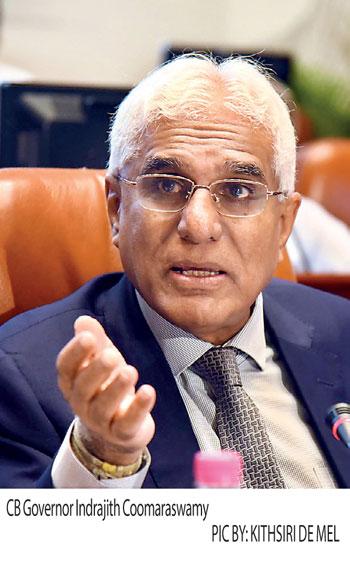23 Feb 2019 - {{hitsCtrl.values.hits}}
 By Nishel Fernando
By Nishel Fernando
The Monetary Board of the Central Bank (CB) decided to reduce the Statutory Reserve Ratio (SRR) to inject Rs. 60 billion to the domestic money market, aiming to support economic growth and address the persistent deficit liquidity conditions as Sri Lanka’s economic growth is estimated to have slowed down to 3 percent
last year.
Accordingly the CB at its first monetary policy review meeting this year reduced SRR applicable on all rupee deposit liabilities of commercial banks by 1.00 percentage point to 5.00 percent with effect from 01 March 2019.
The three percent economic growth will be the second lowest economic growth recorded by Sri Lanka after 2001.
Despite the low growth, The Board decided to maintain policy interest rates of the CB unchanged at their current levels with anticipated slow down of tightening monetary policy in United States (US) and considering the political uncertainty which could lead to a potential fiscal slippage with the beginning of the election cycle this year.
“We don’t want to relax policy rates too early which could lead to BOP pressure,” CB Governor Indrajith Coomaraswamy stressed.
Hence, CB announced that the Standing Deposit Facility Rate (SDFR) and the Standing Lending Facility Rate (SLFR) of the Central Bank will remain at 8.00 percent and 9.00 percent respectively.
Coomaraswamy also announced that CB expects Sri Lanka’s economy to grow by a modest 4 percent this year, which CB believes is a reasonable growth. However, the anticipated growth rate still remains one percent below the newly arrived potential growth rate of 5 percent.
The Central Bank has cut down Sri Lanka’s potential growth rate to 5 percent from the earlier 5.75 percent.
The Governor noted that there’s an estimated deficit liquidity of Rs. 100 billion in Sri Lanka’s domestic market, which partly contributed by defending the rupee against the US dollar last year, drying up the domestic money market.
He revealed that CB has exhausted US$900 million in defending the rupee against the dollar to avoid a sharp depreciation of rupee.
The CB plans to address the remaining Rs. 40 billion deficit liquidity through open market operations.
As the money starts flowing back into emerging markets, Coomaraswamy expects less pressure on the rupee and on the country’s reserves.
He pointed out that the government security market has already seen net inflows of US$ 34 million up to last Thursday, while the rupee has appreciated 1.8 percent against the US dollar.
Meanwhile, the gross official reserves have come down to US$ 6.2 billion at the end of January, adequate to finance 3.4 months of imports as Sri Lanka met the repayment of US$ 1 billion worth of International Sovereign Bonds in January.
Meanwhile, Coomaraswamy said that money supply remained within the targets of CB last year, while the private sector credit growth somewhat went beyond CB’s targets.
According to CB data, the Broad Money (M2b) growth decelerated to 13 percent Year-on-Year in 2018, driven by the contraction in net foreign assets in the banking sector.
The private sector credit expanded by 15.9 percent YoY or by Rs. 762.1 billion last year in spite of a marginal deceleration in December last year.
However, the credit growth in the industry sector has come down to 15.3 percent in 2018 Q4 compared to 20.6 percent in Q12018.
The credit growth in Services sector and Personal Loans and Advances showed the highest expansions of 17.8 percent and 20.3 percent in Q42018.
15 Nov 2024 7 hours ago
15 Nov 2024 9 hours ago
15 Nov 2024 9 hours ago
15 Nov 2024 15 Nov 2024
15 Nov 2024 15 Nov 2024